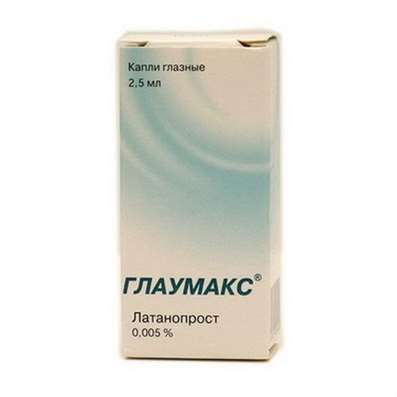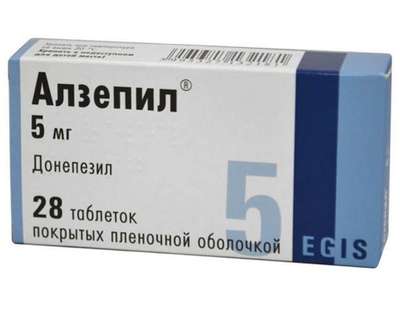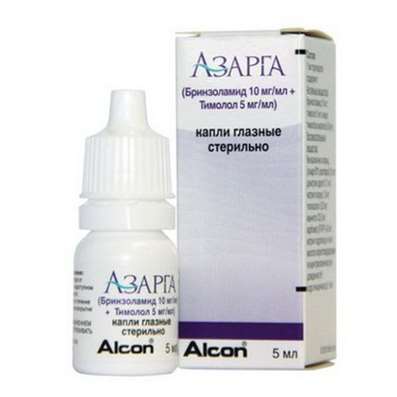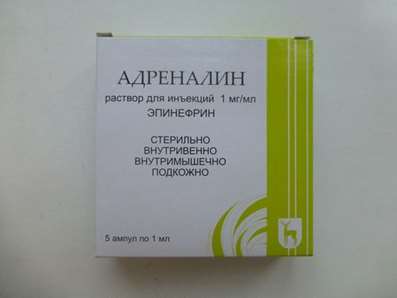Instruction for use: Plagril
I want this, give me price
Dosage form: film-coated tablets
Active substance: Clopidogrelum
Description of the active substance. The scientific information is generalizing and cannot be used to decide on the feasibility of using a particular medicinal product.
Indications
Prevention of atherothrombotic complications in patients with myocardial infarction (with a duration of several days to 35 days), ischemic stroke (with a duration of 7 days to 6 months) or with diagnosed occlusive disease of peripheral arteries; In patients with acute coronary syndrome (in combination with ASA) without ST segment elevation (unstable angina or Q-free myocardial infarction), including patients who underwent stenting in percutaneous coronary intervention and with ST segment elevation (acute myocardial infarction) with medical Treatment and the possibility of carrying out thrombolysis.
Prevention of atherothrombotic and thromboembolic complications (including stroke) in atrial fibrillation in adults with atrial fibrillation, which have at least one risk factor for vascular complications, can not take indirect anticoagulants and have a low risk of bleeding (in combination with ASA).
Contraindications
Hypersensitivity to clopidogrel; Severe hepatic impairment; Acute bleeding, incl. From a peptic ulcer or intracranial hemorrhage; Pregnancy and the period of breastfeeding (see "Application in pregnancy and lactation"); Children under 18 years of age (safety and efficacy not established); For medicinal forms containing lactose (in addition) - rare hereditary lactose intolerance, lactase deficiency and glucose-galactose malabsorption.
Pregnancy and breast-feeding
As a precautionary measure, the use of clopidogrel is contraindicated during pregnancy due to the lack of clinical data on its intake by pregnant women, although animal studies have revealed neither direct nor indirect adverse effects on pregnancy, embryonic development, childbirth and postnatal development.
Breastfeeding in case of treatment with clopidogrel should be discontinued. In studies in rats, it has been shown that clopidogrel and / or its metabolites are excreted into breast milk. Whether clopidogrel penetrates into human milk is unknown.
Fertility. In animal studies, there was no adverse effect of clopidogrel on fertility.
Side effects
Results of clinical trials
The safety of clopidogrel has been studied in more than 44,000 patients, incl. More than 12,000 patients who received treatment for a year or more. In general, the tolerability of clopidogrel at a dose of 75 mg / day in the CAPRIE trial corresponded to the tolerability of ASA at a dose of 325 mg / day, regardless of the age, gender and race of patients. Below are listed the clinically significant adverse effects observed in 5 large clinical trials - CAPR1E, CURE, CLARITY, COMMIT and ACTIVE A.
Bleeding and hemorrhage
Comparison of monotherapy with clopidogrel and ASA. In the CAPRIE clinical trial, the total incidence of all bleeding in patients taking clopidogrel and in patients taking ASA was 9.3%. The incidence of severe bleeding with clopidogrel and ASA was comparable - 1.4 and 1.6%, respectively.
In general, the incidence of gastrointestinal bleeding in patients taking clopidogrel, and in patients taking ASA was 2 and 2.7%, respectively, including. The incidence of gastrointestinal bleeding that required hospitalization was 0.7 and 1.1%, respectively.
The overall frequency of bleeding from another site with clopidogrel in comparison with ASA was higher (7.3 versus 6.5%, respectively). However, the incidence of severe bleeding with clopidogrel and ASA was comparable (0.6 and 0.4%, respectively). The most frequently reported development of the following bleeding: purpura / bruising, epistaxis. Less commonly reported on the development of hematomas, hematuria and ocular hemorrhage (mainly conjunctival). The incidence of intracranial hemorrhages with clopidogrel and ASA was comparable (0.4 and 0.5%, respectively).
Comparison of the combined therapy of clopidogrel + ASA and placebo + ASA. In the CURE clinical trial, in patients treated with clopidogrel + ASA, compared with patients receiving placebo + ASA, there was an increase in the incidence of major (3.7 versus 2.7%) and small bleeding (5.1 versus 2.4%) . Basically, the sources of large bleeding were the gastrointestinal tract and the puncture site of the arteries.
The incidence of life-threatening hemorrhages in patients treated with clopidogrel + ASA was significantly unchanged from patients receiving placebo + ASA (2.2 and 1.8%, respectively), the incidence of fatal bleeding was the same (0.2% Both types of therapy).
The incidence of major bleeding that did not threaten life was significantly higher in patients receiving clopidogrel + ASA than in patients receiving placebo + ASA (1.6 and 1%, respectively), but the incidence of intracranial hemorrhage was similar (0.1 % For both types of therapy).
The incidence of major bleeding in the clopidogrel + ASA group depended on the dose of ASA (<100 mg - 2.6%, 100-200 mg - 3.5%,> 200 mg - 4.9%), as well as the incidence of major bleeding in Placebo + ASA group (<100 mg - 2%, 100-200 mg - 2.3%,> 200 mg - 4%).
Patients who stopped antiplatelet therapy more than 5 days before coronary artery bypass grafting did not show a higher incidence of major bleeding within 7 days after the intervention (4.4% in the clopidogrel + ASA group and 5.3% in the placebo + ASA group). In patients who had continued antiplatelet therapy for the last five days before aortocoronary bypass surgery, the incidence of these events after intervention was 9.6% in the clopidogrel + ASA group and 6.3% in the placebo + ASA group.
In the CLARITY clinical trial, the incidence of major bleeding (defined as intracranial bleeding or bleeding with a decrease in Hb> 5 g / dl) in both groups (clopidogrel + ASA and placebo + ASA) was comparable (1.3 vs. 1.1% in the clopidogrel group + ASA and placebo + ASA group, respectively). It was the same in groups of patients, divided by their initial characteristics and by the types of fibrinolytic therapy or heparin therapy.
The incidence of fatal bleeding (0.8 vs. 0.6%) and intracranial hemorrhages (0.5 vs. 0.7%) in combination with clopidogrel + ASA and placebo + ASA, respectively, was low and comparable in both treatment groups.
In the COMMIT clinical trial, the overall incidence of non-cerebral large bleeding or cerebral bleeding was low and the same (0.6 in the clopidogrel + ASA group and 0.5 in the placebo + ASA group).
In the clinical study ACTIVE-A, the incidence of major bleeding in the clopidogrel + ASA group was higher than in the placebo + ASA group (6.7 versus 4.3%, respectively). Large bleeding was mostly extracranial in both groups (5.3 versus 3.5%), mainly from the gastrointestinal tract (3.5 versus 1.8%). In the clopidogrel + ASK group, intracranial hemorrhage was greater than in the placebo + ASA group (1.4 vs. 0.8%, respectively). There were no statistically significant differences between these treatment groups in the frequency of fatal bleeding (1.1 versus 0.7%) and hemorrhagic stroke (0.8 vs. 0.6%).
Blood disorders
In the CAPRIE study, severe neutropenia (<0.45 × 109 / L) was observed in 4 patients (0.04%) taking clopidogrel and 2 patients (0.02%) taking ASA.
In two of the 9599 patients who took clopidogrel, there was a complete absence of neutrophils in the peripheral blood, which was not observed in any of the 9586 patients taking ASA. Although the risk of developing myelotoxic effects with clopidogrel is low, if a patient who takes clopidogrel has a fever or other signs of infection, a check should be made for possible neutropenia.
In the treatment of clopidogrel in one case, development of aplastic anemia was observed.
The incidence of severe thrombocytopenia (<80 × 109 / L) was 0.2% in patients taking clopidogrel and 0.1% in patients taking ASA; Reported very rare cases of a decrease in the number of thrombocytes <30-109 / l.
In the CURE and CLARITY studies, there was a comparable number of patients with thrombocytopenia or neutropenia in both treatment groups.
Other clinically relevant adverse reactions observed during clinical trials of CAPRIE, CURE, CLARITY COMMIT, and ACTIVE-A
Unwanted reactions that were observed during the above clinical trials are divided into system-organ classes according to the MedDRA classification. The frequency of adverse reactions was determined according to WHO classification as very often (> 1/10); Often (> 1/100, <1/10); Infrequently (> 1/1000, <1/100); Rarely (> 1/10000, <1/1000); Very rarely (<1/10000, including individual messages); The frequency is unknown (it is not possible to determine the incidence of side effects from available data).
From the nervous system: infrequently - headache, dizziness, paresthesia; Rarely - vertigo.
From the digestive tract: often - dyspepsia, abdominal pain, diarrhea; Infrequently - nausea, gastritis, bloating, constipation, vomiting, stomach ulcer, duodenal ulcer.
From the skin and subcutaneous tissue: infrequently - rash, itching.
On the part of the blood and lymphatic system: infrequently - an increase in bleeding time, a decrease in the number of platelets in the peripheral blood, leukopenia, a decrease in the number of neutrophils in the peripheral blood, eosinophilia.
Postmarketing experience with clopidogrel
On the part of the blood and lymphatic system: the frequency is unknown - cases of serious bleeding, mainly subcutaneous, musculoskeletal, ocular hemorrhage (conjunctival, tissue and retina), bleeding from the respiratory tract (hemoptysis, pulmonary hemorrhage), nosebleeds, hematuria and bleeding From postoperative wounds and cases of bleeding with a lethal outcome (especially intracranial hemorrhages, gastrointestinal bleeding and retroperitoneal hemorrhage); Agranulocytosis, granulocytopenia, aplastic anemia / pancytopenia, thrombotic thrombocytopenic purpura, acquired hemophilia A.
On the part of the immune system: the frequency is unknown - anaphylactoid reactions, serum sickness, cross allergic and hematologic reactions with other thienopyridines (such as ticlopidine, prasugrel) (see "Precautions").
Disorders of the psyche: the frequency is unknown - confusion, hallucinations.
From the side of the nervous system: the frequency is unknown - the violation of taste perception.
From the vessels: the frequency is unknown - vasculitis, lowering blood pressure.
On the part of the respiratory system, chest and mediastinum: the frequency is unknown - bronchospasm, interstitial pneumonia, eosinophilic pneumonia.
From the gastrointestinal tract: the frequency is unknown - colitis (including ulcerative or lymphocytic), pancreatitis, stomatitis.
From the side of the liver and bile ducts: the frequency is unknown - hepatitis (non-infectious), acute liver failure.
From the skin and subcutaneous tissues: frequency unknown - maculopapular erythematous or exfoliative rash, hives, itching, angioedema, bullous dermatitis (erythema multiforme, Stevens-Johnson syndrome, toxic epidermal necrolysis), acute generalized exanthematous pustulosis, drug hypersensitivity syndrome, drug rash With eosinophilia and systemic manifestations (DRESS-syndrome), eczema, flat lichen.
From the musculoskeletal and connective tissue: the frequency is unknown - arthralgia (joint pain), arthritis, myalgia.
From the side of the kidneys and urinary tract: the frequency is unknown - glomerulonephritis.
From the genitals and the breast: the frequency is unknown - gynecomastia.
General disorders and disorders at the injection site: frequency unknown - fever.
Indicators of laboratory and instrumental studies: the frequency is unknown - the deviation from the norm of laboratory indicators of the functional state of the liver, an increase in the concentration of creatinine in the blood plasma.
Precautions of measures
In the treatment of clopidogrel, especially during the first weeks and / or after invasive cardiac procedures / surgical intervention, it is necessary to carefully monitor patients for the exclusion of signs of bleeding, including latent.
In connection with the risk of bleeding and undesirable effects from the blood (see "Side effects"), if clinical symptoms appearing during treatment, suspicious for bleeding, it is urgent to do a clinical blood test, determine APTT, the number of platelets, the indicators of functional Activity of thrombocytes and conduct other necessary studies.
Acquired hemophilia. The cases of development of acquired hemophilia with the use of clopidogrel were reported. With the confirmed isolated increase in APTT, accompanied or not accompanied by the development of bleeding, it is necessary to suspect the possibility of developing acquired hemophilia. Patients with a confirmed diagnosis of acquired hemophilia should be observed and treated by specialists in this disease. You should stop taking clopidogrel.
Clopidogrel, as well as other antiplatelet drugs, should be used with caution in patients who have an increased risk of bleeding due to trauma, surgery or other pathological conditions, as well as in patients receiving ASA, NSAIDs, incl. Inhibitors of COX-2, heparin or inhibitors of glycoprotein IIb / IIIa receptors, SSRIs or thrombolytic drugs.
Joint use of clopidogrel with warfarin may increase the intensity of bleeding (see "Interaction"), so the combined use of clopidogrel and warfarin should be done with caution.
In patients with a low activity of the isoenzyme CYP2C19, clopidogrel at the recommended doses produces less active metabolite of clopidogrel and less pronounced its antiplatelet effect, and therefore, when taking the usually recommended doses of clopidogrel in acute coronary syndrome or percutaneous coronary intervention, a higher incidence of cardiovascular disease is possible, Vascular complications than in patients with normal activity of the isoenzyme CYP2C19. There are tests to determine the genotype of CYP2C19, these tests can be used to help choose a therapeutic strategy. Consideration should be given to the use of higher doses of clopidogrel in patients with low CYP2C19 activity (see Pharmacology, Restrictions on Use).
If the patient has a planned surgical operation and there is no need for an antiplatelet effect, then for 5-7 days before the operation, the use of clopidogrel should be discontinued.
Clopidogrel prolongs bleeding time and should be used with caution in patients with diseases predisposing to the development of bleeding (especially gastrointestinal and intraocular). Drugs that can cause damage to the gastrointestinal mucosa (such as ASA, NSAIDs) in patients taking clopidogrel should be used with caution.
Patients should be warned that when taking clopidogrel (in the form of monotherapy or in combination with ASA), it may take longer to stop bleeding, and that if they have an unusual bleeding (localization or duration) they should Inform your doctor about it. Before any future operation and before starting any new drug, patients should inform the doctor (including the dentist) about taking clopidogrel.
Very rarely, after the use of clopidogrel (sometimes even briefly), there have been cases of thrombotic thrombocytopenic purpura, which is characterized by thrombocytopenia and microangiopathic hemolytic anemia, accompanied by neurological disorders, impaired renal function and fever. Thrombotic thrombocytopenic purpura is a potentially life-threatening condition requiring immediate treatment, including plasmapheresis.
During the treatment it is necessary to monitor the functional activity of the liver. With severe liver damage, one should remember about the risk of hemorrhagic diathesis.
Taking clopidogrel is not recommended for an acute stroke less than 7 days old (there is no data on its use in this condition).
Cross-allergic and / or hematologic reactions between thienopyridines. It should be clarified the history of allergic and / or hematological reactions to other thienopyridine derivatives (such as ticlopidine and prasugrel) in patients; Cases of such reactions between thienopyridines are described. Tienopyridines can cause mild and severe allergic (rash, angioedema) or hematologic (thrombocytopenia, neutropenia) reactions. Patients who had previously experienced allergic and / or hematologic reactions to one of the thienopyridine derivatives, may have an increased risk of developing such reactions when taking another drug from the thienopyridine group. Such patients require careful follow-up during the entire period of therapy to identify signs of hypersensitivity to clopidogrel.
In patients who have recently undergone ischemic stroke or transient ischemic attack with a high risk of recurrent atherothrombotic events, combination therapy with clopidogrel and ASA has not demonstrated greater efficacy in comparison with clopidogrel monotherapy, but may increase the risk of major bleeding. Therefore, such combination therapy should be conducted with caution and only in the case of proven clinical benefit from its use.
Since lactose is present in one of the dosage forms (tablets) of clopidogrel, patients with a rare hereditary intolerance to galactose, a deficiency of lactase and a glucose-galactose malabsorption syndrome, use of this dosage form is contraindicated.
Influence on the ability to drive vehicles and work with machinery. Clopidogrel does not have a significant effect on the abilities needed to drive vehicles and work with machinery.

 Cart
Cart





